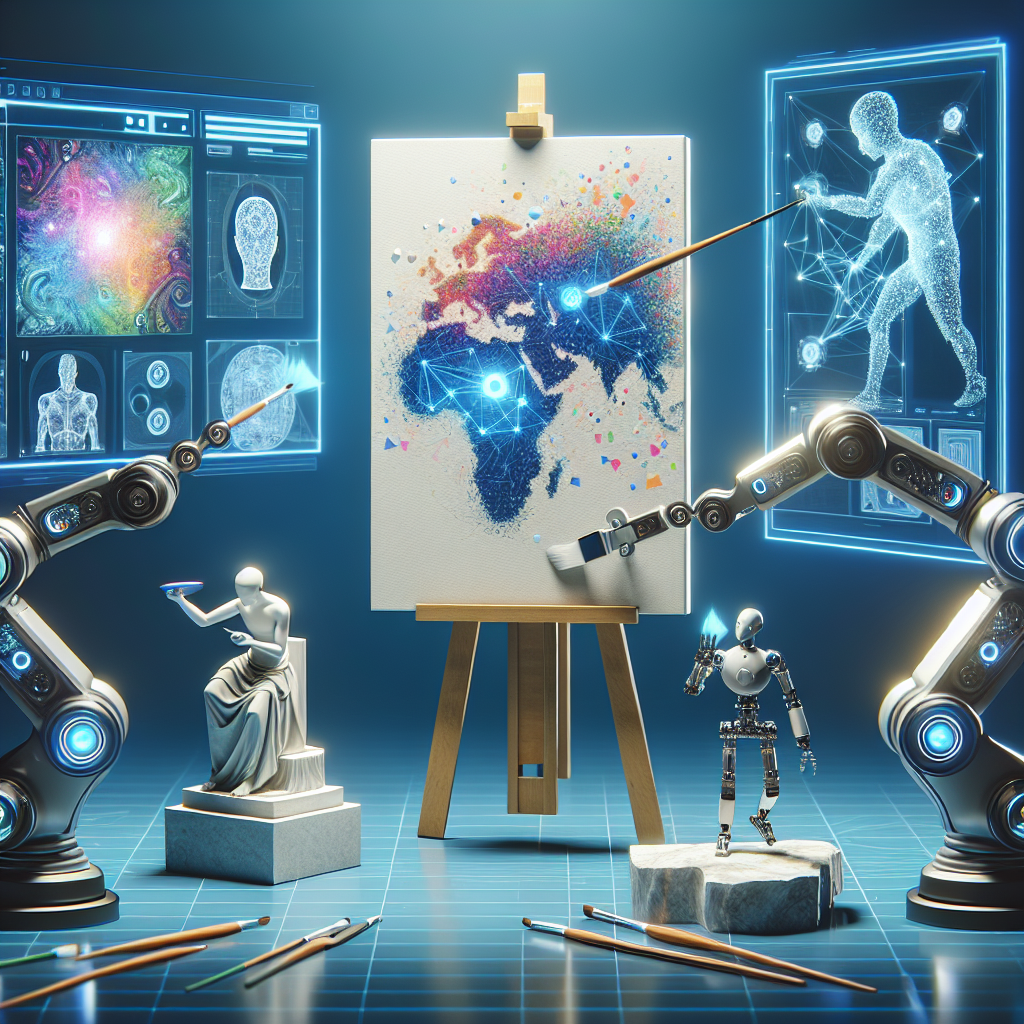Art and design have always been at the forefront of innovation and creativity, pushing the boundaries of what is possible and redefining how we see the world around us. With the advent of artificial intelligence (AI), a new era of artistic expression and design has emerged, revolutionizing the way we create and interact with art.
AI technologies have the ability to analyze vast amounts of data and generate new ideas and designs that were previously unimaginable. Artists and designers are now utilizing AI algorithms to create stunning works of art, design innovative products, and push the limits of what is possible in their respective fields.
One of the most significant ways AI is revolutionizing art and design is through the use of generative adversarial networks (GANs). GANs are a type of AI algorithm that consists of two neural networks – a generator and a discriminator – that work together to create new images or designs. The generator creates new images based on a set of parameters, while the discriminator evaluates the images and provides feedback to the generator to improve its output.
This process of generating new images through GANs has led to the creation of stunning artworks that blur the lines between human and machine creativity. Artists can use GANs to generate new ideas, experiment with different styles, and create unique pieces that would have been impossible to create without the help of AI.
Another way AI is revolutionizing art and design is through the use of machine learning algorithms. These algorithms can analyze massive amounts of data to identify patterns and trends, allowing artists and designers to gain insights into their work and make more informed decisions. Machine learning algorithms can also be used to automate certain aspects of the creative process, freeing up artists and designers to focus on more complex and innovative tasks.
For example, designers can use machine learning algorithms to analyze customer data and preferences to create personalized products and experiences. Artists can use these algorithms to analyze color palettes, composition, and other elements of their work to create more engaging and visually appealing pieces.
AI is also transforming the way we interact with art and design. Virtual reality (VR) and augmented reality (AR) technologies are being used to create immersive experiences that allow viewers to engage with art in new and exciting ways. Artists and designers are using AI-powered tools to create interactive installations, virtual galleries, and other digital experiences that push the boundaries of traditional art forms.
One example of this is the use of AI-powered chatbots to engage with viewers and provide information about the artwork. These chatbots can answer questions, provide background information, and even engage in conversations with viewers, creating a more interactive and engaging experience for art enthusiasts.
AI is also revolutionizing the way we create and design products. Designers can use AI algorithms to generate new product ideas, optimize designs for manufacturing, and streamline the production process. AI-powered tools can also help designers create more sustainable and environmentally friendly products by analyzing materials, processes, and supply chains to identify areas for improvement.
Overall, AI is revolutionizing art and design by enabling artists and designers to push the boundaries of creativity, experiment with new ideas and techniques, and create innovative and engaging works that were previously unimaginable. As AI technologies continue to evolve and become more sophisticated, the possibilities for artistic expression and design are limitless.
FAQs:
Q: Can AI truly be considered a creative tool in art and design?
A: Yes, AI can be considered a creative tool in art and design. AI algorithms such as GANs and machine learning can generate new ideas, styles, and designs that push the boundaries of traditional creativity. Artists and designers can use AI to experiment with different techniques, styles, and concepts to create innovative and engaging works of art.
Q: Are traditional artistic skills and techniques still important in the age of AI?
A: Yes, traditional artistic skills and techniques are still important in the age of AI. While AI can help artists and designers generate new ideas and designs, traditional skills such as drawing, painting, and sculpting are still essential for creating meaningful and impactful works of art. AI should be seen as a tool to enhance and complement traditional artistic skills, rather than replace them.
Q: How can artists and designers learn to use AI in their work?
A: Artists and designers can learn to use AI in their work by taking online courses, attending workshops and seminars, and experimenting with AI-powered tools and software. There are many resources available to help artists and designers learn how to integrate AI into their creative process, including tutorials, forums, and online communities where they can connect with other artists and designers who are using AI in their work.
Q: What are some ethical considerations when using AI in art and design?
A: Some ethical considerations when using AI in art and design include issues related to copyright, ownership, and bias. Artists and designers should be mindful of using AI algorithms that have been trained on diverse and inclusive datasets to avoid perpetuating stereotypes and biases in their work. They should also consider the implications of using AI-generated content and ensure that proper credit is given to the creators and developers of the AI algorithms used in their work.
In conclusion, AI is revolutionizing art and design by enabling artists and designers to push the boundaries of creativity, experiment with new ideas and techniques, and create innovative and engaging works that were previously unimaginable. As AI technologies continue to evolve and become more sophisticated, the possibilities for artistic expression and design are limitless. Artists and designers who embrace AI as a creative tool will be at the forefront of this artistic revolution, creating stunning works of art that captivate and inspire audiences around the world.

